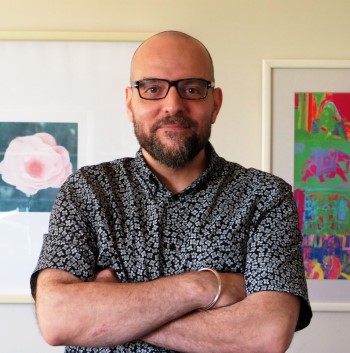Visual materials are a crucial and exciting aspect of the tourism industry. They play a significant role in attracting tourists to different destinations. Various channels, such as brochures, websites, announcements, postcards, calendars, posters, and other promotional tools, require visually compelling materials to stand out and grab attention. As a tourism professional, I have always been interested in the history of promotional photography in different countries. While researching the history of promotional photographs in Turkey, I came across a fascinating character named Othmar Pferschy. His story is intriguing and sheds light on Turkey’s rich cultural heritage and natural beauty.

Othmar Pferschy (1898-1984) was a passionate adventurer born in Graz, Austria, in 1898. He loved to travel and take photographs, and his work proved that photography could help promote places and attract tourists. After marrying a Greek lady, Othmar started working at the famous Français Studio in Istanbul. Established in 1900, the studio was one of the most renowned photography studios of its time and captured the essence of Istanbul’s social and cultural life. Othmar worked there for almost six years and took many beautiful and unique photographs of Istanbul that showcase the city’s essence. Each photograph is a testament to Istanbul’s rich history and how much the city has changed. The photograph of people praying inside Hagia Sophia is particularly unique and captured my heart the first time I saw it.
Later, Othmar became unemployed, but Vedat Tör, who was about to launch a magazine promoting Turkey abroad, saw potential in him. La Turquie Kemaliste* magazine was a fantastic initiative to promote Turkey abroad. However, it required many photographs to achieve its goal. Vedat Bey called on all the governors and municipalities of that time, but none of them had enough quality photographs to showcase Turkey’s archaeological wealth, history, and tourist attractions. Somehow, Vedat Bey’s and Othmar’s paths crossed, and they agreed to work together.

Othmar travelled across Turkey for the next five years (1931-36) and took 16-17 thousand photographs. He photographed this vast geography, from Van to Bitlis, Bodrum to the Black Sea, and Istanbul to Silifke. These photographs provide a glimpse into the everyday life of people in Turkey during that era, how they dressed, how they worked, and the architecture of the time. Some photographs show Turkey’s natural beauty, such as stunning landscapes and seascapes.
Thanks to Othmar’s passion and dedication, we have rare, unique, and priceless photographs that significantly contributed to the country’s tourism. Othmar Pferschy was Turkey’s first tourism photographer, and he laid some foundations for the industry. Their efforts are remarkable and should be commemorated for generations to come. The legacy of Othmar Pferschy lives on as his photographs continue to inspire tourism professionals and travellers alike.

Othmar Pferschy’s photographs have been published in many books and magazines, including his notable works such as La Turquie Kemaliste, Türkei, Südosteuropa, Graz, and Kärnten. These photographs represent a unique visual history of Turkey and its people, revealing the country’s hidden gems and providing insight into its cultural heritage. They allow us to understand the past and appreciate the present.
In conclusion, Othmar Pferschy was a pioneer in tourism photography, and his contribution to Turkey’s tourism industry is immeasurable. His passion for photography and travel made him a unique individual who saw the potential of photography in promoting tourism. His photographs continue to inspire tourism professionals and travellers alike, and they serve as a testament to the beauty and diversity of Turkey. Preserving his legacy and celebrating his achievements is essential, as they are a significant part of Turkey’s cultural heritage.

In addition to his work in La Turquie Kemaliste, Türkei, Südosteuropa, Graz, and Kärnten, Othmar Pferschy’s photographs have been featured in various exhibitions and galleries. His photographs are highly regarded for their aesthetic value and historical significance. They have been used in academic research and have contributed to the documentation of Turkey’s cultural heritage. Othmar Pferschy’s legacy is not only limited to his photographs but also to his contribution to the field of tourism photography. He paved the way for future generations and inspired countless photographers to follow in his footsteps.
* “La Turquie Kemaliste” was a bi-monthly publication that played a crucial role in promoting and disseminating the principles of Kemalism and the reforms implemented during the early years of the Turkish Republic. The magazine was published from 1934 to 1949 by the Direction Générale de la Presse au Ministère de l’Intérieur (General Directorate of Press at the Ministry of the Interior) in Turkey, spanning a total of 46 issues.
The magazine’s importance lies in the fact that it was an essential tool for spreading Kemalism’s ideology and promoting Turkey’s modernisation and secularisation. The magazine’s primary focus was on promoting the principles of Kemalism, which included a strong emphasis on nationalism, republicanism, populism, and secularism. The magazine was an effective means of disseminating these ideals to a broader audience and played a significant role in shaping Turkish society and culture during that period.
Despite the magazine’s discontinuation in 1949, during the early years of multi-party democracy in Turkey, it remains an important historical document that provides insight into the ideas and values promoted during the Kemalist period and the impact these ideas had on Turkish society and culture. The publication’s historical significance is undeniable and worth exploring for anyone interested in Turkey’s modernisation and secularisation.
After this period, the Turkish press became more diverse and independent, with various newspapers and magazines offering different perspectives on politics, culture, and society. However, “La Turquie Kemaliste” remains a valuable historical document that provides a unique insight into the ideas and values that shaped Turkey during that period. Therefore, it is essential to keep exploring and learning about the past to better understand the present and future. So, let’s delve deeper into the historical significance of “La Turquie Kemaliste” and its crucial role in shaping Turkey’s modernisation and secularisation.
References:
- Français Studio. (n.d.). Retrieved October 11, 2021, from http://www.fransizfotografcilari.com/index.php?did=10
- La Turquie Kemaliste. (n.d.). Retrieved October 11, 2021, from https://www.worldcat.org/title/turquie-kemaliste/oclc/68138841





